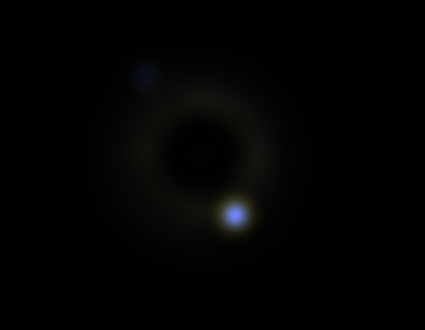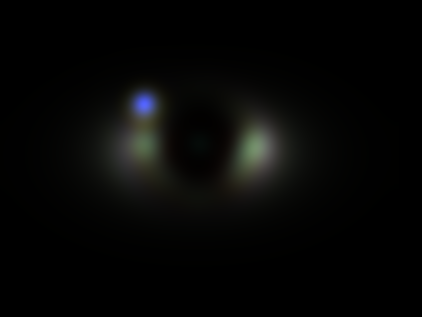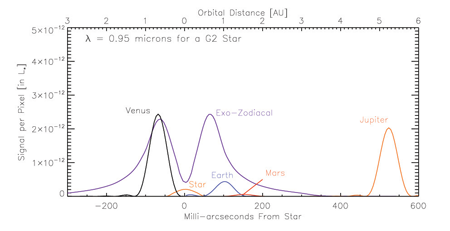
[ Deployment Sequence ] [ Experimental Results ] [ Simulations ]
The following images are simulations of the Venus-Earth-Sun System, taken with a 4-meter telescope. The visible ring is the exozodiacal light. The only variable in these images is the inclination of the system compared to our line of sight.
 |
This is a simulated image of the inner solar system taken at 10 parsecs with a 4-meter telescope. The pale blue bulge at the top of the image is Earth, and the bright bulge at the bottom is Venus. The inclination of this image is 0 degrees. |
 |
This is a simulated image of the inner solar system taken at 10 parsecs with a 4-meter telescope. The Earth is clearly visible as a pale, blue dot. Venus is harder to make out due to the zodiacal light. The inclination of this image is 60 degrees. |
The following two images illustrate how the exo-zodiacal intensity compares to planet intensity at different wavelengths (courtesy of Phil Oakley).
 |
| This graph is a contrast "slice" of a New Worlds simulation. It illustrates how the exo-zodiacal intensity compares to planet intensity at different wavelengths. Consistent with current data, Jupiter's bigger size makes it easier to detect (there is a higher signal from Jupiter than from Earth). |
 |
This graph is also a contrast "slice" of a New Worlds simulation. In comparison to the graph above, a planetary system would be easier to detect at a wavelength of 0.5 microns (for a G2 star) than at a wavelength of 0.95 microns. Earth is harder to see at 0.95 microns In addition, while the exozodiacal light is more spread out at Earth's position (when viewing at a wavelength of 0.95 microns), the exozodiacal light at neighboring locations is smeared into Earth's projected location. |